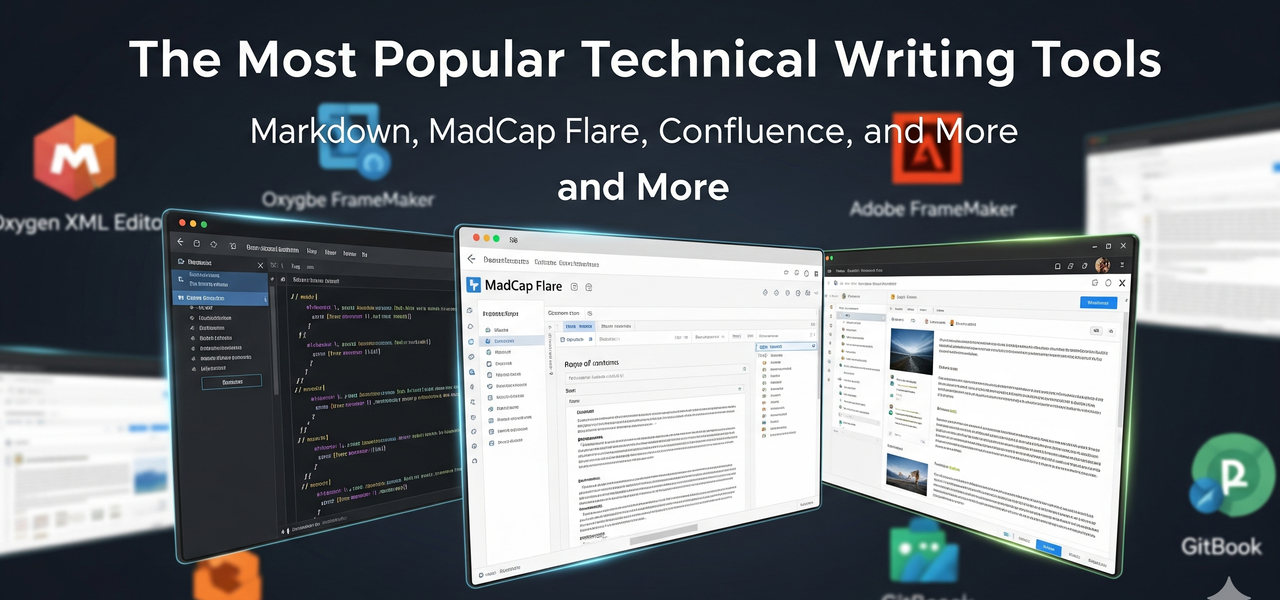Introduction
In today’s fast-paced tech world, software and products are evolving rapidly. This creates an increasing need for clear, accurate, and well-structured documentation. That’s where technical writing comes in.
But being a good technical writer requires more than strong communication skills — it also means choosing the right tools. In this article, we’ll explore the most popular technical writing tools, their advantages, and who should use them.
1. Markdown
- What is it?
- Markdown is a lightweight markup language that converts plain text into formatted documents with ease.
- Advantages:
- Extremely easy to learn.
- Widely supported in GitHub, GitLab, and similar platforms.
- Open-source and free.
- Best for:
- Technical writers working closely with developers and managing documentation in code repositories.
2. MadCap Flare
- What is it?
- MadCap Flare is a powerful help authoring tool (HAT) designed for complex documentation projects.
- Advantages:
- Single-source publishing (HTML, PDF, ePub, CHM, and more).
- Strong content management for large-scale documents.
- Ideal for user manuals, API docs, and software guides.
- Best for:
- Enterprise-level technical writers managing large and structured documentation.
3. Confluence
- What is it?
- Developed by Atlassian, Confluence is a wiki-style platform focused on collaboration and knowledge sharing.
- Advantages:
- Simplifies team collaboration and knowledge management.
- Integrates seamlessly with Jira and other Atlassian tools.
- Useful for documentation, knowledge bases, and internal communication.
- Best for:
- Agile teams and writers producing project-based documentation.
4. Google Docs
- What is it?
- A cloud-based document editor widely known for its simplicity and accessibility.
- Advantages:
- Real-time collaboration.
- Easy sharing and commenting.
- Quick setup and simple to use.
- Best for:
- Small teams or writers creating lightweight documentation drafts quickly.
5. Adobe FrameMaker
- What is it?
- An industry-standard authoring tool for creating long and complex technical documents.
- Advantages:
- Designed for large, structured documents.
- XML/DITA support for advanced content management.
- Professional-quality PDF publishing.
- Best for:
- Writers handling official manuals, reports, and long-form documentation.
6. Notion
- What is it?
- A modern tool for knowledge management, note-taking, and documentation.
- Advantages:
- Clean and intuitive interface.
- Flexible templates and integrations.
- Combines documentation, task management, and collaboration in one place.
- Best for:
- Startups, freelancers, and teams that need a flexible all-in-one workspace.
Conclusion
The right technical writing tool can make a huge difference in the clarity, structure, and accessibility of your documentation. While Markdown is perfect for developer-friendly docs, tools like MadCap Flare and Adobe FrameMaker are built for enterprise needs. On the other hand, Confluence and Notion enhance team collaboration, while Google Docs offers speed and simplicity.
Ultimately, the best choice depends on your workflow, team size, and the type of documentation you need to create.
